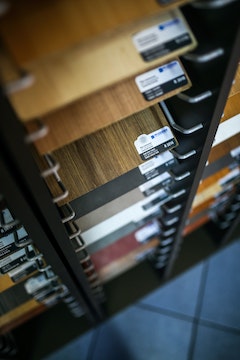
Introduction
The use of laminates is becoming increasingly popular in the modern-day construction industry. These materials are used to add aesthetic appeal, functionality, and durability to various surfaces, including plywood. However, for a successful lamination process, an adhesive is necessary to bind the two surfaces together. One of the most popular adhesives in use today is synthetic rubber adhesive. In this article, we will explore the superiority of synthetic rubber adhesive in bonding laminates to plywood.
Why is Synthetic Rubber Adhesive Superior in Bonding Laminates to Plywood?
-
Superior Bonding Strength:
Synthetic rubber adhesive boasts superior bonding strength compared to other adhesives. The adhesive forms a strong bond with the laminate and plywood surfaces, resulting in a long-lasting bond. The adhesive is particularly useful in situations where there are large surface areas to be bonded, and the bond must remain strong over extended periods. -
High Resistance to Heat and Moisture:
Laminates and plywood are commonly used in high humidity areas such as kitchens and bathrooms, which means that the adhesive used to bond them together must be resistant to moisture. Synthetic rubber adhesive is not only moisture-resistant but also has excellent heat resistance. As a result, it can withstand extreme temperatures and high humidity levels without losing its bonding strength. -
Quick Drying Time:
Synthetic rubber adhesive has a quick drying time, making it ideal for use in large scale construction projects where time is a crucial factor. The adhesive sets quickly, allowing for the speedy assembly of laminates and plywood. -
Versatile and Adaptable:
Synthetic rubber adhesive can be used to bond a variety of laminates to plywood, including high-pressure laminates, decorative laminates, and low-pressure laminates. The adhesive is also adaptable and can be used in different surface applications, such as metal, wood, and plastic. -
Low VOC version available:
Low VOC synthetic rubber adhesive is also available, making it an even more environmentally friendly option. The low VOC option reduces the amount of volatile organic compounds emitted during and after the bonding process. This is particularly important in enclosed spaces where the fumes can be harmful to human health. Low VOC synthetic rubber adhesive is an ideal option for construction projects that prioritize environmental sustainability and human health.
FAQs:
Q. Can synthetic rubber adhesive be used in outdoor applications?
A. Yes, synthetic rubber adhesive is suitable for outdoor applications. It is resistant to heat, moisture, and other environmental factors that could affect the bonding strength.
Q. Is synthetic rubber adhesive safe to use?
A. Yes, synthetic rubber adhesive is safe to use. However, like all adhesives, it should be handled with care and kept out of reach of children.
Q. How long does synthetic rubber adhesive take to set?
A. Synthetic rubber adhesive has a quick drying time, and it can set in as little as 15 minutes, depending on the application method and the temperature.
Conclusion:
Synthetic rubber adhesive is the go-to adhesive for bonding laminates to plywood, and for a good reason. Its superior bonding strength, resistance to heat and moisture, quick drying time, and versatility make it an ideal adhesive for large scale construction projects. Whether you are working on a commercial or residential project, synthetic rubber adhesive is a reliable and effective option for bonding laminates to plywood. So, the next time you are looking for an adhesive to bond laminates to plywood, consider synthetic rubber adhesive.